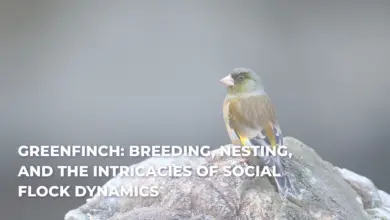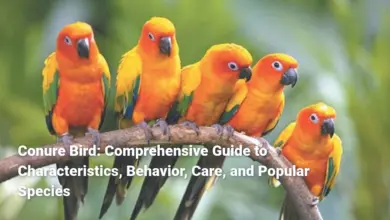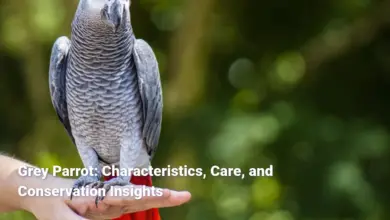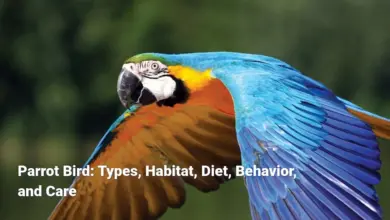Kite Birds: Exploring Their Characteristics, Behavior, and Conservation Efforts
An In-Depth Look at the Characteristics, Types, and Conservation of Kite Birds
Kite Birds, an impressive group of raptors within the family Accipitridae, capture the hearts of birdwatchers and nature enthusiasts alike. These avian wonders are known for their distinctive features, behaviors, and stunning aerial displays. With their graceful flights, kites navigate the skies with remarkable agility, showcasing a variety of adaptations that allow them to thrive in diverse habitats.
From the lush wetlands to urban landscapes, kite birds symbolize freedom and mastery of the skies. This article will delve deeply into the characteristics of kite birds, including their physical features, behaviors, diets, cultural significance, and conservation status, highlighting their importance within the ecosystem and our collective responsibility to protect them.
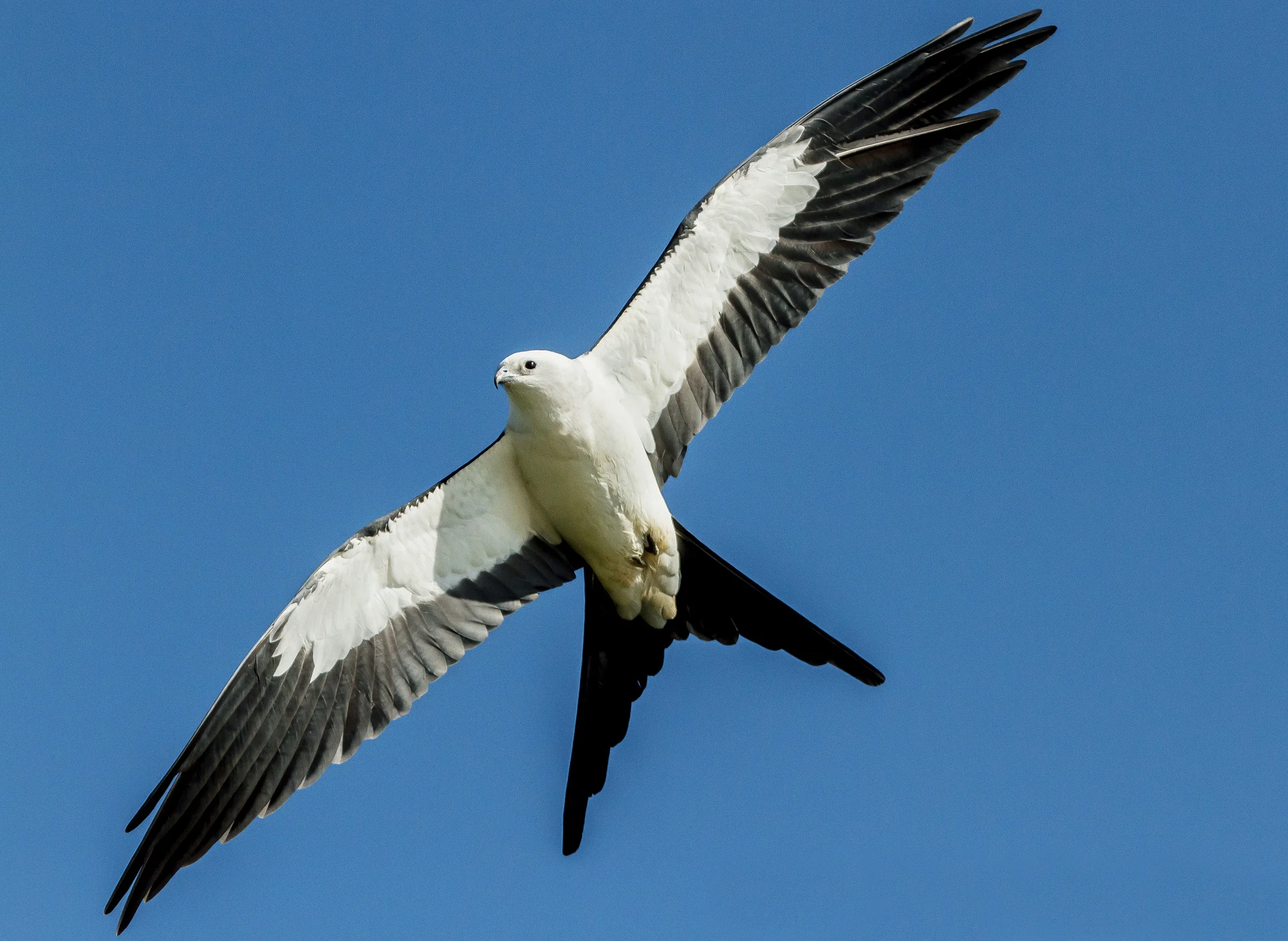
Characteristics of Kite Birds
Kite birds bear several defining characteristics that make them unique and fascinating creatures within the avian family. In general, these birds of prey exhibit a blend of beauty and practicality that captivates observers. Their long wings and tails grant them exceptional soaring capabilities, akin to gliders that effortlessly navigate the wind currents. With an acumen for hunting, they display remarkable eyesight and reflexes, allowing them to detect movement from great heights.
Additionally, kites’ plumage is often a vibrant spectacle whether it’s the striking black and white of the swallow-tailed kite or the regal coloration of the red kite. This artistic color palette is not merely aesthetic; it serves critical functions in camouflage and mating displays.
The following table summarizes essential elements of kite bird characteristics:
| Characteristic | Details |
|---|---|
| Body Size | Ranges from 20 cm to over 60 cm in length |
| Wingspan | Typically spans from 1 meter to over 2 meters |
| Feeding Behavior | Primarily insectivorous, some eat small mammals |
| Hunting Technique | Utilizes gliding, hovering, and aerial acrobatics |
| Social Structure | Many species nest and feed in communal groups |
These diverse characteristics underscore the adaptability and ecological significance of kite birds, making them key players in their habitats.
Physical Features of Kite Birds
Kite birds exhibit a stunning array of physical features that not only define their identity but also aid in their survival as aerial hunters. Let’s dive deeper into these characteristics to appreciate the remarkable diversity within this group.
- Body and Size: Kite birds display a variety of sizes, with some species measuring as little as 30 cm in length, while others can exceed 60 cm. For instance, the Black Kite generally measures between 50 to 60 cm, showcasing a robust body optimized for flight. This variation in size contributes to the wide range of environments they inhabit, as smaller species may prefer more enclosed vegetation while larger species dominate open landscapes.
- Wings and Tail: Characteristic long and pointed wings define kites. The swallow-tailed kite, renowned for its forked tail, showcases how these wings facilitate extended soaring and maneuverability. With a wingspan that can reach up to 1.2 meters, these birds can glide for long distances, allowing them to conserve energy as they hunt.
- Plumage: Kite birds are adorned in a rich tapestry of colors and patterns, vital for both camouflage and attracting mates. For example, the red kite is known for its reddish-brown body and distinctive forked tail, which aids in its identification from afar. The Mississippi kite, on the other hand, presents a more muted gray plumage, allowing it to blend in with its surroundings.
- Beak and Talons: Adaptations crucial for their predatory lifestyle are evidenced in kite species like the Snail Kite, which possesses a specialized hooked beak tailored for extracting snails from their shells. Sharp claws and talons further enhance their hunting abilities, ideal for grasping and securing prey.
- Eyesight: Exceptional eyesight allows kite birds to spot prey from impressive heights. This adaptation is significant for locating food during long glides, ensuring their hunting success. Some species can detect movement from up to a mile away.
- Flying Techniques: Kite birds are known for their proficient flight styles, including hovering and gliding. For instance, the White-tailed Kite can hover over potential prey while scanning the area for movement. Their ability to maneuver during flight showcases their evolution as exceptional hunters.
Kite birds’ physical adaptations not only manifest aesthetically but also translate into enhanced survival capabilities, allowing them to thrive in various ecosystems.
Behavior and Habitats of Kite Birds
Kite birds display a mesmerizing array of behaviors that complement their physical attributes, enhancing their adaptability to diverse habitats. An exploration of their behaviors reveals insights into their ecological roles and social structures.
- Nesting Habits: Kites typically create nests high in trees, often constructing them with twigs and softer materials for the comfort of their young. These nests are often located near water sources or open areas that allow easy foraging. For example, Mississippi kites can be found nesting in colonies, promoting community bonding and protection against predators.
- Social Behavior: Kite birds are generally social creatures. After the breeding season, species like the Mississippi kite congregate in large flocks, sometimes numbering in the thousands. This social behavior not only enhances safety in numbers during migration but also boosts efficiency in foraging.
- Feeding Behavior: Kites exhibit unique feeding techniques that reflect their adaptability. Their diet mainly consists of flying insects, small mammals, and occasionally nestlings of other birds. They often hunt using a combination of gliding and aerial acrobatics, swooping down to catch prey mid-air.
- Habitat Preference: Kite birds thrive in diverse habitats, from wetlands to grasslands and urban settings. Their adaptability allows them to occupy various niches; for instance, the Black Kite thrives in urban areas, scavenging for food among human waste, while the Swallow-tailed Kite prefers the more pristine environments of swamps and tropical woodlands.
- Migration Patterns: Many kite species engage in seasonal migrations, undertaking long journeys to reach breeding or wintering grounds. For example, the Mississippi kite migrates to South America for the winter, traversing diverse habitats along the way. Their migratory behavior is critical for their life cycle, demonstrating their remarkable navigation skills.
In summary, the behavior and habitats of kite birds not only highlight their ecological significance but also showcase their adaptability to changing environments, solidifying their roles as vital components of various ecosystems.
Migration Patterns of Kite Birds
Migration is a fundamental aspect of the life cycle of many kite bird species, shaping their geography and seasonal behavior. The fascinating journey of these birds illustrates their resilience and adaptability as they navigate challenges along the way.
- Seasonal Movements: Many kite species engage in long-distance migrations between breeding and wintering grounds. The Mississippi kite, for example, migrates to southern subtropical areas of South America, especially Argentina and Brazil, during winter months. This journey can span thousands of kilometers and incorporates various habitats.
- Timing and Triggers: Their migratory behavior is often triggered by environmental changes, particularly temperature and availability of food. Kites typically commence their migration in late summer or early fall, taking advantage of prevailing winds. This instinctual drive serves as a guide, ensuring they locate suitable winter habitats.
- Social Flocking: Migration often sees kites traveling in large flocks, which offer numerous advantages. Traveling in groups provides safety from predators and improves efficiency in foraging. For example, the Mississippi kite is known for migrating in groups that can number up to 10,000 individuals, a phenomenon that strengthens their social bonds during this arduous journey.
- Navigational Skills: Kite birds possess exceptional navigational skills, honed through generations of experience. They rely on a combination of environmental cues such as the sun’s position, geographic landmarks, and magnetic fields to chart their courses. This intrinsic ability is essential for successfully completing their migrations.
- Challenges and Threats: Despite their adaptiveness, kite birds face numerous challenges during migration. Habitat degradation, weather conditions, and human activities can pose significant threats. As they move through varied terrains, they encounter obstacles that can affect their survival rates, highlighting the need for conservation efforts.
In conclusion, the migration patterns of kite birds are a captivating aspect of their life cycles, showcasing their resilience and adaptability while illustrating the complexities of their existence in the natural world.
Types of Kite Birds
Kite birds represent a diverse group of raptors, each with its unique characteristics and ecological roles. Below is a summary of various types of kite birds, illustrating their diversity in size, plumage, and behavior.
- Black Kite (Milvus migrans): Found worldwide, particularly in Africa and Asia, this species is highly adaptable to urban environments. Known for its scavenging behavior, it typically feeds on carrion and small mammals.
- Red Kite (Milvus milvus): This European raptor is recognized by its reddish-brown plumage and distinctive forked tail. It thrives in grasslands and woodlands, primarily preying on small mammals and carrion.
- Swallow-tailed Kite (Elanoides forficatus): A striking black and white kite common in the Americas, characterized by its long forked tail. It primarily feeds on insects and small reptiles, showcasing exquisite aerial hunting skills.
- Mississippi Kite (Ictinia mississippiensis): A medium-sized kite prevalent in North America, known for its gray plumage and impressive aerial agility. It mainly preys on insects, particularly during the breeding season.
- White-tailed Kite (Elanus leucurus): Recognizable by its white head and tail, this kite inhabits open grasslands and agricultural areas, primarily hunting small mammals and birds using powerful hovering techniques.
- Snail Kite (Rostrhamus sociabilis): Adapted specifically to hunt apple snails, this wetland resident features a hooked beak that reflects its specialized diet.
- Brahminy Kite (Haliastur indus): Common along coastlines and mangroves in Southeast Asia, this kite is characterized by its distinctive brown body and white head. Its diet primarily includes fish and crustaceans.
- Black-shouldered Kite (Elanus caeruleus): This species, found across Europe and Asia, is known for its social behavior and expertise in hunting small mammals using innovative hovering techniques.
The variety within the kite bird family showcases the adaptability and ecological significance of these birds. Each species fills a unique niche in its environment, illustrating the beauty of nature’s diversity.
Common Kite Species
Among the various types of kite birds, several species stand out due to their distinctive features and ecological importance. Below is an overview of some common kite species and what makes each unique:
| Species | Physical Features | Diet | Habitat |
|---|---|---|---|
| Black Kite | Medium-sized with a broad wingspan and brown plumage | Scavenger: carrion & insects | Urban areas, wetlands, forests |
| Red Kite | Characterized by reddish-brown feathers with a deeply forked tail | Small mammals & carrion | Woodlands, grasslands |
| Swallow-tailed Kite | Striking black and white plumage with a long forked tail | Insects & small reptiles | Tropical swamps and forested areas |
| Mississippi Kite | Gray coloration with pointed wings, medium size | Insects | Open woodlands, urban settings |
| White-tailed Kite | White body with gray wings and tail, hovering flight pattern | Small mammals & birds | Grasslands, marshes |
| Snail Kite | Hooked beak adapted for extracting apple snails | Apple snails | Wetlands and marshes |
| Brahminy Kite | Dark brown body with a white head, coastal preference | Fish and crustaceans | Coastal areas, mangroves |
| Black-shouldered Kite | Small to medium size, often seen hovering, with blue-grey color | Small mammals | Grasslands, farmlands |
Each of these species exhibits distinct physical characteristics and adaptations that underline their ecological roles, highlighting the importance of conserving these raptors and their habitats.
Distinct Features of Each Kite Species
Kite birds are fascinating not only for their diverse habitats but also for their unique physical and behavioral traits. Here we explore some distinct features of notable kite species.
- Swallow-tailed Kite (Elanoides forficatus):
- Distinguishing Traits: A striking black and white kite with a distinctive long forked tail, providing it with effortless aerodynamics. Their agility in flight is a sight to behold, as they often swoop gracefully to catch insects mid-air.
- Habitat: Predominantly seen in the tropical regions of the Americas, particularly in the southern United States and South America.
- Mississippi Kite (Ictinia mississippiensis):
- Distinguishing Traits: Known for its light gray plumage and sharp, pointed wings, allowing for exceptional maneuverability during flight. Their high-pitched calls are often heard during breeding seasons.
- Habitat: Found throughout the central and southern United States, adapting well to urban environments and open wooded areas.
- White-tailed Kite (Elanus leucurus):
- Distinguishing Traits: Marked by a predominantly white body and gray wings, these kites are often seen hovering over grasslands while searching for food. Their unique feeding behavior is characterized by their ability to stay virtually motionless in the air.
- Habitat: Favours agricultural fields, marshes, and grasslands, where they can spot small mammals and birds.
- Snail Kite (Rostrhamus sociabilis):
- Distinguishing Traits: Equipped with a hooked beak specially adapted for feeding on apple snails, this species has a unique look and is recognized for its dark plumage.
- Habitat: Inhabits wetlands and marsh areas where apple snails are plentiful.
- Black Kite (Milvus migrans):
- Distinguishing Traits: Recognized for its broad wings and adaptability, this kite displays a robust body built for scavenging and effective hunting. Its dark plumage allows for excellent camouflage in various environments.
- Habitat: Widely distributed across Europe, Africa, and Asia, often found in urban settings due to its scavenging behavior.
Each kite species is a study in adaptability, with features that reflect their ecological niches and feeding strategies. These distinctive traits empower them to thrive in changing environments, underscoring the necessity of preserving their habitats.
Feeding Habits of Kite Birds
Kite birds possess a variety of feeding habits shaped by their specialized adaptations and ecological roles. Their dietary preferences reveal much about their hunting techniques and the ecosystems they inhabit.
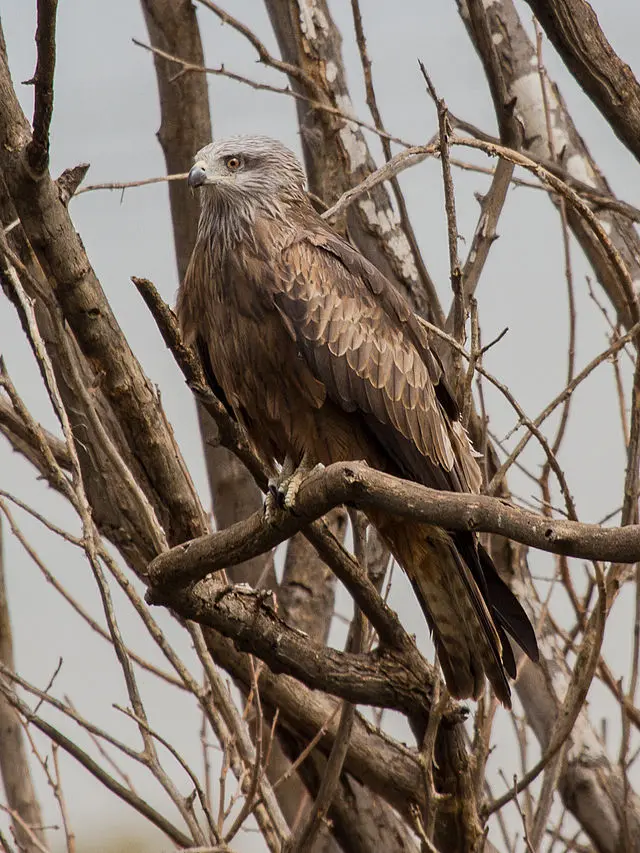
- Dietary Preferences: Kite birds are primarily insectivorous, with many species focusing on flying insects like cicadas, grasshoppers, and beetles. Some, like the Mississippi kite and Swallow-tailed kite, have diets rich in insects, while others, such as the Snail Kite, have more specialized diets consisting mainly of apple snails.
- Hunting Techniques:
- Gliding and Swooping: Kites are known to glide effortlessly through the air, using thermal drafts to cover large distances while searching for prey. This technique allows them to conserve energy effectively.
- Hovering: Species like the White-tailed Kite are known for their unique hovering behavior, where they remain almost motionless in the air while scanning for food on the ground. Once they spot potential prey, they swoop down to catch it with precision.
- Feeding Strategies: Kite birds often hunt individually but may also feed in groups, which enhances foraging efficiency. They are known to coordinate during feeding times, creating a dynamic interaction with their environment and allowing mutual benefits.
- Role in Ecosystems: By controlling insect populations and preying on small mammals, kite birds play an essential role in their ecosystems. Their presence helps maintain the balance of insect populations, contributing to agricultural health in areas they inhabit.
- Adaptations for Feeding: The beaks and talons of kite birds are adapted to their specific feeding habits, allowing them to grip and tear their prey effectively. For instance, the Snail Kite’s hooked beak is uniquely designed for extracting snails, a prime example of specialization within the kite family.
The feeding habits of kite birds not only reflect their roles within ecosystems but also highlight their adaptability as they capitalize on available resources.
Diet of Kite Birds
The diet of kite birds varies significantly among species, boasting impressive adaptability to their environments. A closer examination of their dietary habits allows for greater understanding of their ecological roles:
- Swallow-tailed Kite:
- General Diet: Primarily feeds on aerial insects such as dragonflies and beetles, as well as small reptiles and amphibians.
- Hunting Strategy: Known for catching insects mid-flight, showcasing incredible aerial agility.
- Mississippi Kite:
- General Diet: Focuses on large flying insects, particularly cicadas and grasshoppers, which are plentiful during the breeding season.
- Hunting Strategy: Hunts during the day, often soaring or gliding, using shifts in wind currents to its advantage.
- White-tailed Kite:
- General Diet: Prefers small mammals, such as voles and mice, along with birds and reptiles.
- Hunting Strategy: Utilizes a hovering technique to spot potential prey from above, providing a clear advantage.
- Snail Kite:
- General Diet: Specializes in feeding on apple snails, demonstrating a unique dependence on a specific food source.
- Hunting Strategy: Uses its hooked beak to extract prey from shells, showcasing specialized adapted feeding methods.
- Black Kite:
- General Diet: Omnivorous; feeds on a diverse range of items including carrion, insects, and small mammals.
- Hunting Strategy: Known to scavenge actively in urban areas, benefiting from human waste in addition to hunting.
These varied diets reflect not only the kites’ resourcefulness but also their adaptability to different environments and food sources, illustrating the significance of dietary variety within the kite family.
Hunting Techniques of Kite Birds
Kite birds exhibit diverse hunting techniques shaped by their physical adaptations and prey preferences. Each technique highlights their unique evolutionary traits that facilitate successful hunting and feeding behaviors.
- Aerial Acrobatics: Kite species are renowned for their impressive aerial feats. The swallow-tailed kite, for example, is celebrated for its graceful glides and swift dives. These acrobatic maneuvers are not just for display; they serve the practical purpose of catching fast-moving prey, such as flying insects or small birds.
- Kiting and Hovering: The White-tailed Kite demonstrates a distinct hunting approach by frequently hovering in place. This technique, known as “kiting,” allows them to survey the ground with pinpoint precision before diving down to seize their prey, often small mammals or birds.
- Swooping and Gliding: Many kite species, such as the Mississippi kite, employ a swooping technique. They launch into a glide from a high altitude, taking advantage of thermal currents to descend rapidly toward their prey. This method conserves energy while increasing striking speed.
- Collaboration in Hunting: Some kite species are observed to hunt collaboratively, potentially offering safety from larger predators while increasing their chances of success when targeting larger prey. For instance, black kites may engage in communal hunting, working together to flush out insects or small mammals.
- Feeding Efficiency: Kites are versatile hunters, capable of adapting their techniques based on prey availability and habitat. Their striking adaptations long wings for soaring and sharp talons for grasping maximize their efficiency in hunting diverse food sources.
Through these varied hunting techniques, kite birds have adapted to thrive in different environments, showcasing their remarkable resilience and role in ecosystem dynamics.
Kite Birds in Different Cultures
Kite birds possess a rich cultural symbolism, serving as powerful symbols across various societies. They encapsulate themes of freedom, vision, and spiritual connections in folklore, art, and traditions. Here’s a deeper look into how kite birds are woven into different cultural contexts:
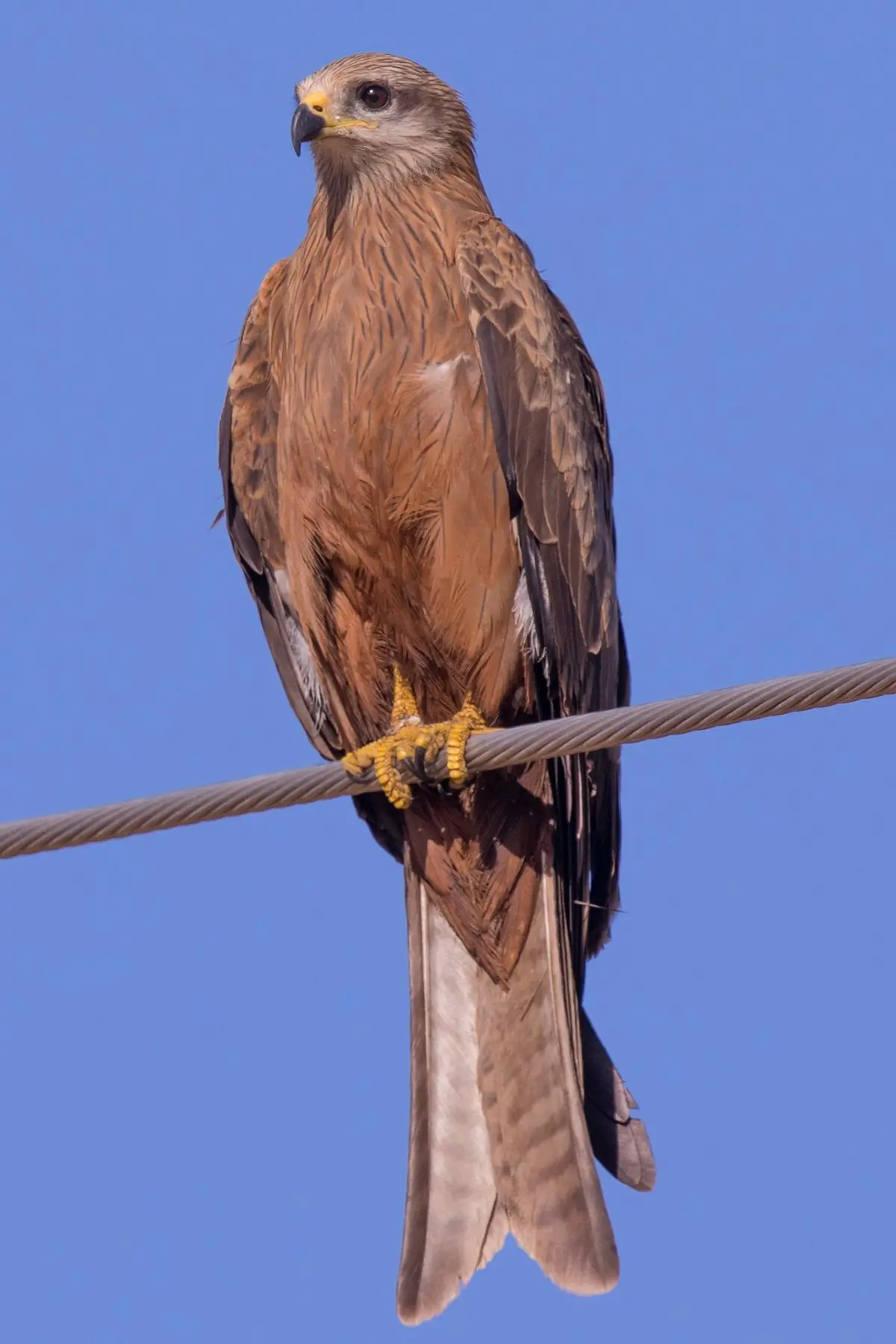
- Symbolism in Folklore: Kite birds are often regarded as harbingers of good fortune and are tied to spiritual beliefs. Many cultures view them as messengers between the earthly world and the spirit realm, embodying qualities like wisdom and intuition. Their soaring nature emphasizes a sense of freedom and transcendence.
- Cultural Significance in Art: Kite birds frequently find representation in various forms of art, serving as subjects in paintings, carvings, and textiles. These artistic depictions highlight their grace and beauty, often associating them with transformation, hope, and aspirations. For instance, in Chinese watercolor paintings, kites symbolize good luck and prosperity.
- Celebrations and Festivals: In some cultures, kite birds feature prominently in traditional festivities. They are celebrated during kite flying festivals, where their graceful movements in the sky reflect freedom and joy. The Japanese engage in kite-flying traditions to celebrate the arrival of spring, portraying kites adorned with intricate designs to symbolize new beginnings.
- Medicinal and Spiritual Practices: In Indigenous cultures, kite birds often represent spiritual guidance. They are viewed as guides towards enlightenment and are featured in various medicinal practices to invoke protection and healing.
- Ecological Awareness: As kite populations face threats from habitat loss and environmental changes, their cultural significance often informs conservation efforts. Communities that recognize their symbolic importance sometimes become more engaged in preserving the natural habitats that support kite birds, linking cultural values with environmental responsibility.
In summary, kite birds embody deep cultural meanings across various societies, serving as symbols of freedom, guidance, and transformation. Their presence in folklore, art, and traditions underscores their significance within human culture, fostering respect and reverence for these magnificent creatures.
Symbolism of Kite Birds in Folklore
The symbolism of kite birds in folklore is rich and nuanced, permeating various cultures with profound meanings that reflect their graceful nature and role within ecosystems. A closer examination highlights the significant themes associated with these birds:
- Freedom and Aspiration: Kite birds are frequently seen as symbols of freedom and aspiration, representing the ability to rise above mundane existence. In many cultures, their soaring flight serves as an inspiration for individuals to rise above challenges and pursue their dreams. This notion is prevalent in Native American traditions, where kite birds symbolize the spirit’s journey towards higher consciousness.
- Spiritual Connection: Numerous myths portray kite birds as messengers between the earthly realm and the spiritual world. In this context, they represent the ability to transcend physical limitations and connect with the divine. For example, some African communities view kites as carriers of prayers that ascend to the heavens, embodying spiritual guidance and protection.
- Transformation and Renewal: In various cultures, kite birds are linked with themes of transformation and renewal. Their migratory patterns and seasonal behaviors symbolize change and the cyclical nature of life. This is evident in Chinese culture, where kites symbolize the release of troubles and draw good fortune during festivals.
- Wisdom and Vision: With their exceptional sight and elevated flight, kite birds symbolize wisdom and perspective. They are viewed as wise guides, offering insights into life’s journey. In Celtic folklore, kites are celebrated as divine messengers tasked with bringing clarity to earthly challenges.
- Community and Cooperation: Kite birds often engage in social behaviors such as foraging and nesting in groups. This aspect of their behavior resonates with human concepts of community and cooperation, reinforcing the notion that harmony can be achieved through collective effort. Many cultures admire this trait, tying it back to values of kinship and communal support.
Through these diverse symbolisms, kite birds convey essential ideals related to freedom, spirituality, transformation, and community, fostering a deep connection between humanity and nature.
Kite Birds in Art and Literature
Kite birds have long captivated the imaginations of artists and writers, becoming prominent subjects in various works of art and literature. Their representation often reflects deeper meanings and themes, integrating their beauty and significance into cultural expressions.
- Artistic Depictions: Kite birds appear in numerous artworks across the globe, often showcasing their elegance in flight. Artists capture their grace through visual mediums, employing vibrant colors and dynamic compositions. For instance, traditional Asian paintings frequently feature kite birds soaring amidst landscapes, symbolizing freedom and harmony with nature.
- Literary References: In literature, kite birds are often used as metaphors for larger themes, such as hope, freedom, and the pursuit of dreams. They may characterize characters who seek personal growth or transformation, much like the journey of migrating kites. In modern poetry, kites symbolize the delicate balance between aspiration and reality, illustrating the challenges faced in seeking freedom.
- Folklore and Myths: Many cultures incorporate kite birds into their folklore, attributing magical qualities to them. For example, in some Native American stories, kites represent the souls of ancestors watching over the living, connecting past and present. These narratives reinforce the importance of affinity with nature and the lessons that can be learned from observing wildlife.
- Cultural Significance in Festivals: Art and literature also inform cultural practices such as kite flying during traditional festivals. In India, kites symbolize the arrival of spring, with colorful designs reflecting the vibrancy of life. Celebrations not only bring communities together but also highlight the enduring connection between kite birds and human culture and creativity.
- Conservation Narratives: In contemporary art and literature, kite birds are depicted to raise awareness about conservation issues, serving as a call to action. Writers and artists emphasize the beauty and fragility of these birds, urging communities to protect their habitats. This newfound narrative shifts the focus on celebrating their presence while reminding society of its responsibility towards their conservation.
Through artistic and literary expressions, kite birds emerge as symbols of freedom, connection to nature, and cultural significance. Their impact transcends time and continues to inspire people across generations.
Conservation Status of Kite Birds
The conservation status of kite birds varies significantly across species, reflecting the diverse challenges they face in different environments. Understanding these statuses helps illuminate the dire need for effective conservation efforts to secure the future of these remarkable birds.
- Population Trends: Many kite bird species, such as the black kite and red kite, have shown resilience due to successful conservation programs. Conversely, birds like the swallow-tailed kite face more significant challenges, especially in urbanized regions where their habitat is rapidly declining.
- IUCN Red List: The International Union for Conservation of Nature (IUCN) evaluates the conservation status of kite birds. For instance, the red kite is classified as “Least Concern,” largely due to successful reintroductions and habitat protection initiatives. In contrast, the swallow-tailed kite has been categorized as “Near Threatened,” highlighting the need for ongoing conservation strategies.
- Habitat Protection: Essential habitats for kite birds need to be protected to ensure their survival. Wetlands, woodlands, and agricultural areas serve as critical nesting and feeding grounds. Habitats are under threat from urban development, agriculture, and climate change, necessitating concerted conservation efforts.
- Community Engagement: Involving local communities is vital for successful kite conservation. Education and awareness programs can foster appreciation for these birds and promote habitat preservation. Citizen science initiatives allow community members to contribute to monitoring kite populations, reinforcing their role in conservation.
- Research and Monitoring: Continued research efforts are needed to track kite populations and assess threats. Collecting data on breeding success, migratory patterns, and habitat use is essential for informing conservation strategies. Such data provides insight into how effective current efforts are and where additional resources are necessary.
In summary, the conservation status of kite birds highlights the urgent need for protection measures and comprehensive strategies. Collaborative efforts between conservation organizations, government bodies, and local communities will be crucial in safeguarding these magnificent birds for future generations.
Threats to Kite Bird Populations
Kite birds face numerous significant threats that impact their populations and conservation status. Understanding these threats is essential to implementing effective conservation strategies.
- Habitat Loss: One of the most pressing threats to kite populations is the loss of natural habitats. Urban development, agriculture, and deforestation have led to the degradation of essential nesting and foraging areas. Since the 1700s, approximately half of the wetlands in North America have been lost, significantly impacting kite bird populations.
- Pesticide Use: The application of pesticides in agriculture has considerable effects on kite birds. Contaminated prey can accumulate harmful chemicals, leading to decreased reproductive success and overall health. Insects, a primary food source, may also be affected by these chemicals, making food scarcity a critical issue.
- Climate Change: Climate change poses severe risks to kite birds and their habitats. Rising temperatures, modified weather patterns, and related ecological shifts can disrupt migration routes and nesting behaviors. Additionally, rising sea levels affect coastal habitats where some kite species, like the Brahminy kite, are found.
- Predation: Kite nests are vulnerable to natural predators, such as raccoons and great horned owls. Nesting success can be impaired as a result, particularly when habitats are fragmented, reducing safe nesting sites.
- Pollution: Water pollution impacts the ecological health of wetlands and waterways where kite birds live and hunt. Pollution can lead to decreased food availability, negatively affecting survival rates and reproductive success.
In conclusion, the threats to kite bird populations are complex and interconnected. Addressing these challenges through habitat protection, sustainable agricultural practices, and climate change mitigation is crucial for the future of these remarkable birds.
Conservation Efforts for Kite Birds
Conservation efforts for kite birds cater to addressing the multifaceted threats they face, ensuring the protection and sustainability of their populations. Here are some key initiatives underway:
- Habitat Protection and Restoration: Conservation organizations prioritize protecting critical habitats through dedicated reserves, protected areas, and management plans. Habitat restoration efforts involve replanting native vegetation and enhancing wetlands to create healthy ecosystems that support kite populations.
- Legal Protections: Legal frameworks, such as the Migratory Bird Treaty Act, play a crucial role in protecting kite species from hunting, habitat destruction, and direct human impacts. These protections help to maintain stable populations, allowing kites to thrive in their natural environments.
- Research and Monitoring Programs: Data collection is vital for understanding kite populations and their needs. Research initiatives monitor breeding success, migratory patterns, and habitat preferences. This information helps inform targeted conservation strategies and assess the effectiveness of ongoing efforts.
- Community Engagement: Engaging local communities in conservation practices cultivates a collective responsibility toward kite preservation. Educational programs enhance public awareness of kite ecology and their significance, fostering local stewardship of habitats.
- Citizen Science Initiatives: Programs that encourage citizen involvement in monitoring kite populations allow communities to participate actively in conservation. Observation efforts can contribute valuable data toward understanding population trends and threats.
- Public Awareness Campaigns: Raising awareness about the plight of kite birds and their ecological roles is essential for garnering support for conservation. Campaigns that highlight the beauty and significance of these birds can inspire action at local, national, and global levels.
In summary, the various conservation efforts aimed at protecting kite birds emphasize collaboration, research, and community involvement. By striving for holistic approaches to their conservation, we can ensure these magnificent raptors continue to grace our skies for generations to come.





